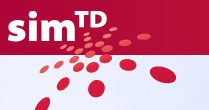Connected cars require interoperability to be truly connected
As the goal for car-to-x functionality becomes closer to reality in the world of connected cars, the issue of interoperability plays a big role. Most automotive OEMs are working on interoperability at some level, but the communication begins within their own brands. Audis talking to Audis, Volvos talking to Volvos, BMWs talking to BMWs – you get the picture. For this functionality to leap to live roadways the different brands will need to have the ability to “speak” to each other and the roadside infrastructure they are passing; which of course involves standardization.
 The simTD project in Germany has already initiated work toward achieving this goal. There were three areas of focus for the research being conducted: road safety, traffic efficiency and the integration of value-added services. Today’s cars are safer than ever with anti-lock brake systems, electronic stability control, traction control systems, airbags, lane change warnings and collision avoidance systems. But all of this functionality works without communication outside of the vehicle, using instead sensors within the vehicle to react to a certain situation and minimize injury. Imagine how large this sphere of awareness could be if vehicles were sharing data with each other about what is happening in neighboring lanes of traffic or on the roadway ahead.
The simTD project in Germany has already initiated work toward achieving this goal. There were three areas of focus for the research being conducted: road safety, traffic efficiency and the integration of value-added services. Today’s cars are safer than ever with anti-lock brake systems, electronic stability control, traction control systems, airbags, lane change warnings and collision avoidance systems. But all of this functionality works without communication outside of the vehicle, using instead sensors within the vehicle to react to a certain situation and minimize injury. Imagine how large this sphere of awareness could be if vehicles were sharing data with each other about what is happening in neighboring lanes of traffic or on the roadway ahead.
Statistics show that in just Germany, the cost of yearly traffic jams tops 17 billion Euros ($18.62 billion). The ability to route around problems in a more timely manner or manage speed to keep traffic flow constant could have a huge impact on these costs through reduced fuel consumption and CO2 emissions.
simTD was a joint project by leading German automotive OEMs, components suppliers, telecommunication companies and research institutions. The project was funded and supported by the Federal Ministry of Economics and Technology, the Federal Ministry of Education and Research, and the Federal Ministry of Transport, Building and Urban Development as well as the state of Hessen.
These tests were completed two years ago and the results of the findings were presented to ETSI for consideration in V2X standards work in the region. In the fall of 2014, ETSI published two standards in the area of Intelligent Transport Systems. The Cooperative Awareness Basic Service, EN 302 637-2, and the specification of Decentralized Environmental Notification Basic Service, EN 302 637-3. The first enables the exchange of information between road users and roadside infrastructure, providing position dynamics and attributes, and the second defines the Decentralized Environmental Notification basic service that supports road hazard warnings.
 This has all led to the announcement of a European Union smart corridor to test these systems live on roads between Austria and the Netherlands. Announced at the end of 2014; OEMs are now working to put the plan into motion. The plan is based on IEEE 802.11p, although there are references to the integration of LTE into the program.
This has all led to the announcement of a European Union smart corridor to test these systems live on roads between Austria and the Netherlands. Announced at the end of 2014; OEMs are now working to put the plan into motion. The plan is based on IEEE 802.11p, although there are references to the integration of LTE into the program.
Now we’ll have to see where this road takes us and how long the reality is to a working solution. The good news is that the EU has laid the groundwork. For all the talk of the industry waiting for U.S. legislative decisions on these topics before taking action, it seems to me that the EU is already taking action and maybe needs to be talking about it more.
Like what you read? Follow me on twitter!
Claudia Bacco, Managing Director – EMEA for RCR Wireless News, has spent her entire career in telecom, IT and security. Having experience as an operator, software and hardware vendor and as a well-known industry analyst, she has many opinions on the market. She’ll be sharing those opinions along with ongoing trend analysis for RCR Wireless News.

